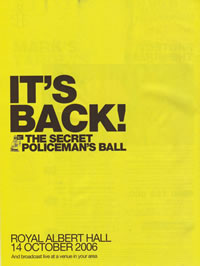Can we build tools to support fundraising #selfie campaigns?
Let us assume that #selfie photos can be “a good thing”. If we take the unusual but wonderfully successful examples of #nomakeupselfie and Stephen Sutton’s thumbs up images, then it would be churlish to suggest otherwise.
Given that, how can charities make them more effective?
I’m not attempting to address the issue of how can charities stimulate a similar viral image-based campaign. I’m simply pondering what tools could charities provide to stimulate or support such campaigns when they do crop up.
1. The image of a receipt
One of the remarkable elements of the #nomakeupselfie campaign was many people’s choice to share a photo of their donation receipt, as a print out or as a screen shot. In this way they demonstrated that they had themselves made a donation so their call for others to do so was from a stronger position. I don’t remember any other fundraising campaign in which people publicised their support by sharing an image of a donation receipt.
But were the images of receipts as useful or powerful as they could be?
Some chose different stages of the donation e.g.
I did my bit. Got to get involved with this. Plenty good people out there #stephensstory #inspiration pic.twitter.com/DrvFi73AAR
— Jacques Burger (@Nabasboer) April 24, 2014
Advertisement
Most donation platform actively encourage donors to share the fact that they have donated. Is there a new kind of image that they could use that donors could be encouraged to share? Perhaps with the option to include with a #selfie that personalises the gift and its announcement?
I haven’t seen an example but wonder if any charity is doing this already?
I am sure, however, that platforms could attempt to provide such a sharable #selfie-based image option and test it.
2. Tying location to #selfie
If you are an organisation with a physical location such as an office, a shop, or even a temporary location such as a big tent at a summer festival, then perhaps you can stimulate a #selfie campaign and include a direct fundraising message.
Here is Adnams’ brewery in Southwold, Suffolk, where they have given over a large window visible from the pavement to a sign that invites tourists, locals or passers-by to share the fact that “I was here” in a very visual and shareable format.
If there were a charity, they could have added a clear ask, perhaps in the form of a text to give number.
3. Photo tools with a call to action
What about locations that your charity doesn’t own? What about all those events you run? Why not create a simple, portable element of kit that a) inspires people to take a selfie and b) includes your branding and a call to action?
Fight for Sight created a giant photo frame along these lines and lots of people lined up at their summer event to have their photo taken.

Fight for Sight photos through a large branded cardboard frame. Photos: Paul Baird at www.smilezoomclick.co.uk
In this case the charity used a ‘I’m supporting Fight for Sight’ message, but they could have added a more direct fundraising ask such as a text to give number.
4. Celebrity supporters can charge for a selfie
So many people seem to want to have their photo taken with their favourite celebrity. Surely here is an opportunity for the charities that some of those celebrities support?
Why not invite your celebrity supporters to request a donation to your charity for each selfie that is taken with them? One Direction singer Louis Tomlinson is doing that: he is charging Doncaster Rovers fans £250 per selfie to raise funds for the club.
In practice, this might work best over a short period or at an event, rather than as an ongoing activity.
What other tools can charities, or their digital platform partners, develop to help fine tune the next #selfie-like campaign? Share your thoughts or examples below.






